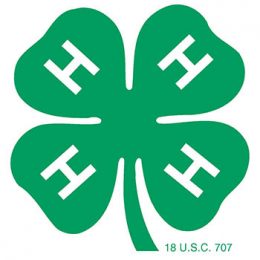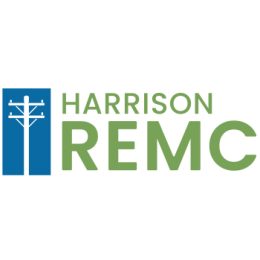(This article was published in the July 2004 issue of Electric Consumer as part of a two-issue focus on Indiana’s “living history” interpreters.)

Josh “The Kid” White strikes the pose of a ”striker” for the Warsaw Fleetfoots, one of Indiana’s vintage base ball clubs that play by the genteel rules of the mid-1800s. That’s when our grand old game changed almost as quickly as the stars on our grand old flag. In the background is a digitally-recreated 31-star version of Old Glory which was the U.S. flag from 1851-58. White is a consumer of Kosciusko REMC. Photo/photo illustration by Richard G. Biever
A century and a half ago, gentlemen and ladies assembled on diamond-shaped fields playing a game of ball for pure pleasure. The game was a new sensation, an American creation, something called “base ball” — spelled as two words.
As the game quickly evolved, it became one word. But what a difference that space between symbolized — separating the leisurely formative game of the 1850s-60s from the competitive, professional game baseball became in the 1870s.
Thanks to groups of fun-loving good sports with an affinity for both history and our National Pastime, baseball’s genteel two-worded forerunner is once again being played on village greens and fallow fields.
This early version is now called “vintage base ball.” It’s played in 16 states from Connecticut to Colorado and in one Canadian province. Vintage base ball even has its own association of more than 50 clubs. No where does interest seem stronger than here in the Midwest. In Indiana this summer, seven vintage teams are active in six counties.
 Vintage ballists and umpires follow more than just the rules of the early game. Everything from equipment, uniforms, customs, language and manners attempt to replicate the time period. Vintage ballists don the long-sleeved blouses, some with neckties, and knickers or dungarees. Their bats, known as “ash” for the wood whence they came, are turned by local craftsmen. They use no mitts; players catch the ball barehanded. They utter strange words like “striker,” “hurler,” and “aces,” and every player is dubbed a nickname. Pitches are made underhanded, and fly balls can be caught in the air or on a single bound to retire the batter.
Vintage ballists and umpires follow more than just the rules of the early game. Everything from equipment, uniforms, customs, language and manners attempt to replicate the time period. Vintage ballists don the long-sleeved blouses, some with neckties, and knickers or dungarees. Their bats, known as “ash” for the wood whence they came, are turned by local craftsmen. They use no mitts; players catch the ball barehanded. They utter strange words like “striker,” “hurler,” and “aces,” and every player is dubbed a nickname. Pitches are made underhanded, and fly balls can be caught in the air or on a single bound to retire the batter.
But foremost, the matches are conducted according to high standards of sportsmanship and respect for others. Players for each team compliment one another: “Well struck, sir!” is often heard from both benches on solid base knocks. No swearing, spitting, scratching, wagering, consuming of alcoholic spirits or chewing of tobacco is allowed. And the umpire’s judgment is never questioned (at least out loud).
“It is a lot of fun. You get to step out of this century back to the 1858 times. It’s just totally respectful, and you get so much support from the crowds, or ‘cranks’ as we all call them,” said Jeff Casto, captain of the Door Village Prairie Dogs from LaPorte County. “It’s four hours you can get away from the worries of the world and share good times and good friends. It doesn’t matter if you win or lose. It’s just like when you were a kid — playing (baseball) in an empty lot.”
Playing ball in an old-fashioned manner is not a new idea. At the opening of the Baseball Hall of Fame in Cooperstown, New York, in 1939, a game from an earlier time was played. Civil War battle re-enacting has long included ball games as part of the encampments. By the early 1980s, living history museums included old rules base ball as a regular part of their programming.
Soon other teams began popping up. Lake County’s Deep River Grinders became Indiana’s first regular vintage club in 1991. Though not playing this season, Freetown Village, an African-American history museum in Indianapolis, has fielded a team on and off for many years. Meanwhile, the Indianapolis Blues vintage club is playing an exhibition with locals in the Ohio River community of Madison July 31 to encourage the start of a team there. New teams are being sought all around the state to form a league.
Though many of the ballists come from baseball and softball backgrounds, experience is not a prerequisite. The game is more about sharing history and fun than it is about the outcome. “If you’re a blood-and-guts softball player, I usually say ‘thanks, but no thanks,’” said Village at Winona Lake Blue Laws captain Bill “Naughty Waltz” Firstenberger when it comes to recruiting new players. “It’s more about camaraderie and having a good time.”
“We started the program here to portray the game and for everybody to have fun,” noted John Jenney, captain of the Elkhart Bonneyville Millers. “Competition always edges in there, but you’re out to do a show, really.”
The ballists play off each other and the umpire who is as much a part of the entertainment. Vintage umpires educate spectators about the game’s history and quirks as it unfolds and even provide comic relief. And all interact freely with the cranks that sometimes swell into the hundreds during festivals and celebrations.
At one recent match, umpire Rick Fedoruk halted play and fined the husband of Blue Law’s Jolie “Moose” Miller a quarter after she revealed too much ankle while adjusting her long skirt during a time at bat. (Women play alongside men on vintage clubs; they just have to remember the norms of 1850s polite society and wear long skirts!) When several male ballists on the opposing club whistled over Miller’s moment of indiscretion, the umpire fined them a quarter for enjoying the sight of Miller’s ankle too much. “We have small children out here watching the game,” warned the umpire, tongue firmly planted in cheek.
Miller, a former collegiate softballer, just shook her head and smiled. “These rules are too weird,” she later muttered.
Weird. But, huzzah! What a grand and glorious old game!
Story and photos by Richard G. Biever


The ball used in a vintage game,top, rests beside a modern-day baseball. The vintage ball is slightly larger and softer and is one piece of leather stitched together to form a large intersecting seam on one side. The balls used by the vintage players are specially made to replicate the early base balls and are purchased online from companies that cater to vintage teams. The replica jerseys worn by some of the teams are made by Amish clothing makers.

Bats used by vintage ballists are often turned and marked by local craftsmen, just like they were in the days of yore.

Before the match, Blue Laws captain Bill “Naughty Waltz” Firstenberger, right, goes over ground rules with visiting umpire Rick Fedoruk, of Berrien Springs, Michigan, and the visiting club, the House of David Echoes. Firstenberger and Fedoruk were clarifying the foul line marked by a large tree past some shrubbery and a garden way yonder in left field.

Tabernacle Field, home to the Village at Winona Lake Blue Laws Vintage Base Ball Club Nine, is an open grassy lot just across the road from picturesque Winona Lake. The lot was where professional baseballplayer-turned-evangelist Billy Sunday built his 7,500-seat tabernacle in the 1920s. Though the tabernacle later fell into disrepair and was demolished, the Village has undergone and continues major restoration on many historical sites, like the Billy Sunday home. The base ball club is just another aspect of the restoration of the historic community. The Blue Laws hosted a three-team round-robin tournament with the neighboring Warsaw Fleetfoots and the House of David Echoes, a vintage team from Benton Harbor, Michigan, over Memorial Day weekend, and hosted the Fleetfoots and the Elkhart Bonneyville Millers in another tourney during the Billy Sunday Festival in June. The vehicles parked along a street in right field were described as “animals” or “locomotives that lost their way” by the 1850s-era ballists; they wouldn’t have known about cars and trucks.

Tracey “Liver” Owen of the Village at Winona Lake Blue Laws waits his turn with the “ash.” He is a consumer of Kosciusko REMC.

Warsaw Fleetfoots “hurler” Lowell “Lefty” Hatfield tosses the ball to awaiting Blue Laws “striker” Jolie “Moose” Miller. Hatfield is a Marshall County REMC consumer; Miller is a Kosciusko REMC consumer.

Jolie “Moose” Miller legs it to first base. Though women play vintage ball, too, (just as they did in the mid-1800s), they are required to wear the long skirts of the day. During the match, the umpire fined Miller’s husband, watching from the side, a quarter when he ruled she revealed too much of her ankle and bloomer when she came up to bat.

First baseman for the Warsaw Fleetfoots, Mike “Wax” Beezley, clutches the ball in his bare left hand after making the grab of the throw and putout of the runner. In vintage base ball, mitts and other gear are not allowed. A batter, or “striker,” is out when a fly is caught in the air or on one bound off the ground. Also, strikers cannot overrun first or they can be put out.

In vintage base ball, a run, or “ace,” is not officially scored until the “ballist” who has safely crossed home plate goes to the tallykeeper’s table, asks the tallykeeper to tally his ace for his team, and strikes a bell — as Bill “Stick” Lehman does for the Blue Laws. The scorekeeper is Marie Owen: a volunteer at the Billy Sunday Home and wife of Blue Laws ballist Tracey Owen. The Owens are Kosciusko REMC consumers.

Good sportsmanship is the hallmark of vintage base ball. The Blue Laws give three “huzzahs” and a doff of their caps to their adversaries following a match.

Another base ball tradition that’s honored by today’s clubs is the post-match meal the hosts prepare for the visiting club.
To learn more, visit the Vintage Base Ball Association’s webpage at: www.vbba.org.
As of 2017, the site lists 9 teams in Indiana.



